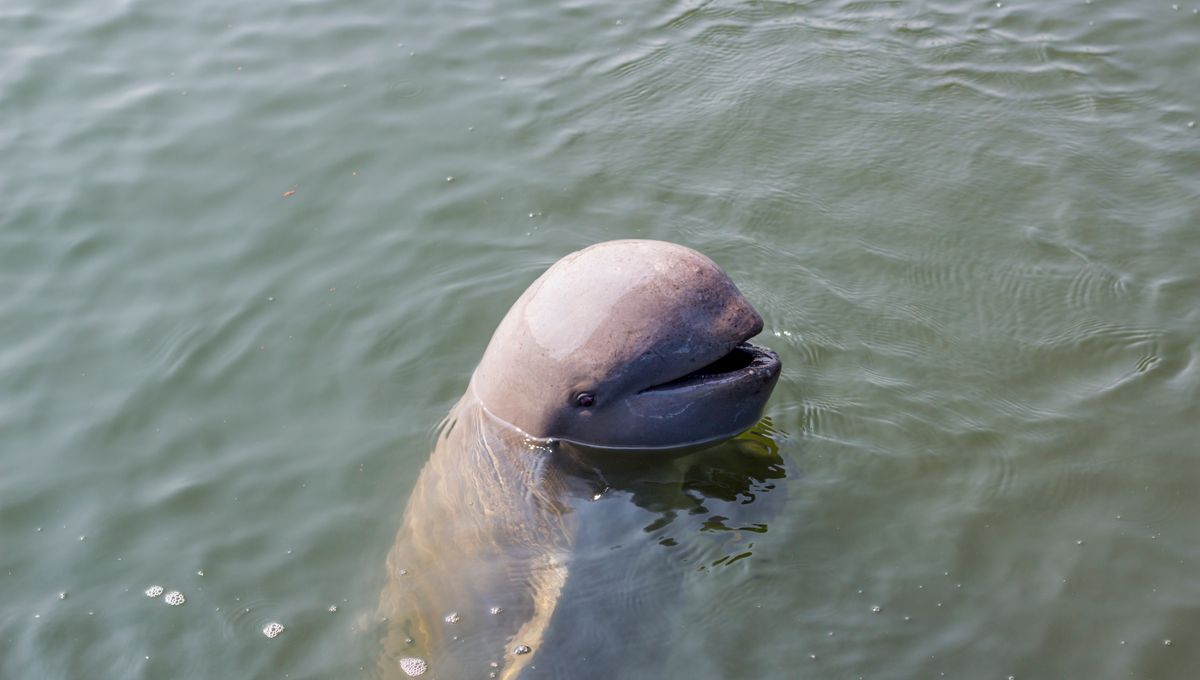
Found in the rivers and coasts of South and Southeast Asia, the undeniably adorable Irrawaddy dolphin is a unique sight for those lucky enough to see it. Its rarity doesn’t come from shyness alone, however – years of human activity have seen the population dwindle, to the point that the species is now classed as endangered. But with a helping hand, can the tide turn for the Irrawaddy dolphin?
Baby beluga lookalike
With a grey upper side and light underside, Irrawaddy dolphins aren’t unusually colored compared to other dolphin species. However, unlike their bottle-nosed relatives, these dolphins have no distinct beak and a pronounced rounded head; they often get compared to dorsal-finned baby beluga whales.
They’re also unusual amongst dolphins in the sense that they have flexible necks, which can sometimes leave them with creases – it’s a bit reminiscent of the rolls on a baby’s arm. Whilst on the smaller side in terms of length – they’re about 2.8 meters (9 feet) as adults – they do have a general chonkiness about them. Combine this with their characteristically smiley expression and you get a pretty adorable-looking creature.
A day in the life
Irrawaddy dolphins can be found throughout South and Southeast Asia, native to a whole host of countries including Cambodia, Bangladesh, and Myanmar. They’re well-known for living in rivers in these regions – there are distinct river-dwelling subpopulations – but can also be found in shallow coastal areas where there’s some kind of freshwater input, such as river deltas.
They aren’t particularly fussy when it comes to food either, known to eat a variety of fish. The dolphins are also quite adaptable in getting their (metaphorical) hands on their dinner; they’ve been known to bottom-feed, sneak in close to fishing vessels to nab from nets or fish thrown overboard, and even spit water to try and confuse fish.
Despite their water-spitting antics, Irrawaddy dolphins are possibly the least showy of the dolphins (we’re looking at you, bottlenoses). They rarely surface and even when they do, they don’t put much of their bodies out of the water – tourist excursions to see them are very much a “blink and you’ll miss it” affair.
Brought back from the brink
Given that they’re notoriously difficult to spot, it’s not been easy to come up with an estimate for the total population of the Irrawaddy dolphin across their entire habitat. However, where some river subpopulations exist, the numbers are concerning enough – in the low 10s to 100s – that they’re classed as endangered on the IUCN Red List.
One subpopulation has even been listed as critically endangered; on a 118-mile stretch of the Mekong River through northern Cambodia into Laos, only 92 Irrawaddy dolphins are estimated to remain. Even that’s an improvement on previous numbers – the species was nearly driven to extinction in the late 20th century after being hunted for food during wartime.
However, the 21st century has seen conservation efforts made to bring the Mekong River population back from the brink. The Cambodian government has worked with groups such as the World Wildlife Fund on a campaign to bring awareness to the species and put laws in place to prevent human-related threats. The stretch of river where the dolphins live has been made a protected zone, there’s been a crackdown on harmful fishing practices, and the appointment of river guards to make sure the rules are being kept.
These efforts seem to have paid off – in 2019, estimates took the population number from 80 up to 92. Although this is a good sign, experts have cautioned that the work is far from over. “As threats to their survival persist, we need to redouble our efforts to protect the dolphins both for their future and that of the river and communities that live alongside it,” said Teak Seng, director of the WWF in Cambodia, speaking to National Geographic.
Hope, however, persists in the face of potential threats. As Seng explained, “Their recovery is a hopeful sign for the river and the millions of people who depend on it. After years of hard work, we finally have reason to believe that these iconic dolphins can be protected against extinction.”
Source Link: Adorable Irrawaddy Dolphins Were On The Edge Of Extinction: What Is Being Done?